#Fingerprint Sensor Market
Explore tagged Tumblr posts
Text
Fingerprint Sensor Market to Surpass USD 6.77 Billion by 2032, Registering 6.3% CAGR
Report Overview The latest research report titled Fingerprint Sensor Market presents a comprehensive analysis of a rapidly growing industry. The report includes a detailed study of the market share, size, growth drivers, recent developments, and top trends. Besides, a thorough analysis of the product offerings, applications, advancements, benefits and scope has been covered. The study includes…
#Fingerprint Sensor Market#Fingerprint Sensor Market 2025#Fingerprint Sensor Market Share#Fingerprint Sensor Market Size#Fingerprint Sensor Market Trends
0 notes
Text
Fingerprint Sensor Market to Reach $5.9 Billion by 2029: Key Growth Drivers and Trends
projected to grow from USD 4.2 billion in 2024 and is estimated to reach USD 5.9 billion by 2029; it is expected to grow at a Compound Annual Growth Rate (CAGR) of 7.0% from 2024 to 2029 according to a new report by MarketsandMarkets(TM). Fingerprint Sensor Market The rise in number of identity threats is one of the key factors leading to emergence of fingerprint technologies. Identity theft refers to the illegal acquisition of an individual's personal or financial details to perpetrate fraud, including unauthorized transactions. It occurs through various methods and inflicts harm on victims' credit, finances, and reputation.
0 notes
Text
#Fingerprint Sensor Market#Fingerprint Sensor Market size#Fingerprint Sensor Market share#Fingerprint Sensor Market trends#Fingerprint Sensor Market analysis#Fingerprint Sensor Market forecast#Fingerprint Sensor Market outlook
0 notes
Text
The Secrets of Fingerprint Scanner Failures

Fingerprint scanners are like the locks on your digital devices, and your fingerprint is the key. They were introduced a long time ago, back in the late 19th century. It is the best way to keep your phone, computer, or even some doors safe.
But sometimes, these fingerprint scanners do not work. But sometimes it was a failure. We don’t always know why. It could be because your finger is wet, or there is dust on the scanner, or maybe your finger is not in the right position.
So, the mystery of fingerprint scanner failures is all about understanding why they sometimes do not work and finding ways to make them work better. It is like solving a little puzzle to keep your digital information safe.
Read More About: https://watchurday.com/the-secrets-of-fingerprint-scanner-failures/
#fingerprint scanner#fingerprint lock#fingerprintlock#fingerprint sensor market#technology#digital devices
1 note
·
View note
Text
Fingerprint sensors are utilized in biometric fingerprint scanners and other fingerprint detecting systems. These gadgets have a fingerprint detection module built-in and are used for security and authenticity.
0 notes
Text
Driving Growth in Fingerprint Sensors Market Dynamics

The fingerprint sensors industry is undergoing accelerated business growth as advanced biometrics become vital across devices and enterprise systems. Industry trends in consumer electronics and automotive sectors highlight surging miniaturization and AI-enabled analytics, elevating industry size and share for key innovators. Market insights point to integration complexities and tightening privacy mandates as evolving market challenges that will shape strategic deployments and future market opportunities. Market Size and Overview The global fingerprint sensors market is estimated to be valued at US$ 11.46 Bn in 2025 and is expected to reach US$ 24.88 Bn by 2032, exhibiting a compound annual growth rate (CAGR) of 11.7% from 2025 to 2032.
Rapid smartphone and wearable adoption represent primary Fingerprint Sensors Market Trends drivers, while integration complexities and privacy restraints shape market dynamics. Segment analysis reveals capacitive sensors commanding major share, with emerging optical and ultrasonic technologies broadening market scope. In-depth market research and the latest Fingerprint Sensors Market report underscore how evolving consumer sentiment and regulatory standards influence market trends and opportunities.
Get More Insights On- Fingerprint Sensors Market
Get this Report in Japanese Language: 指紋センサー市場
Get this Report in Korean Language: 지문 센서 시장
#Government ID Biometrics#IoT Security Solutions#Fingerprint Sensors#Fingerprint Sensors Market#Fingerprint Sensors Market Size#Fingerprint Sensors Market Trends#Coherent Market Insights
0 notes
Text
The analysis examined the present short- and long-term market impact, which will assist decision makers in developing short- and long-term strategies for companies by area.
0 notes
Text
Rising Prevalence of Data Thefts Propelling Demand for Fingerprint Sensors
One of the major factors fueling the sales of fingerprint sensors is their rising usage by the governments of several countries around the world. Fingerprint sensors are increasingly being installed in various government buildings, courts, military headquarters, and public offices for making the premises secure. Moreover, these sensors help the authorities and personnel in these buildings authenticate the identity of the person entering the premises, which, in turn, reduces the chances of identity theft and duplication.
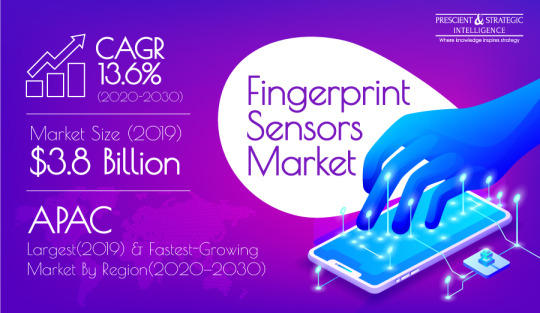
For example, in India, the Unique Identification Authority of India (UIDAI) uses Aadhaar-based biometric identification for ensuring that the benefits sanctioned under social welfare schemes and programs reach the economically weaker sections of the society. Under this model, fingerprints are captured for authenticating the identity of people. Besides this factor, the extensive usage of fingerprint sensors in consumer electronics products is also boosting the sales of these products across the globe.
Fingerprint sensors are increasingly being used in the banking, financial services, and insurance (BFSI) industry. Due to the increasing incidence of data thefts and frauds, the usage of fingerprint sensors is soaring in banks and other financial institutions. Modern payment cards incorporated with fingerprint sensors are faster and more secure than the conventionally used payment cards. These cards not only provide greater security than a traditional four-digit pin but they also authenticate a user’s identity in less than one second.
Due to the above-mentioned factors, the sales of fingerprint sensors are surging sharply across the globe. This is, in turn, fueling the expansion of the global fingerprint sensors market. According to the findings of the market research company, P&S Intelligence, the market attained a valuation of $3.8 billion in 2019. Furthermore, the market will exhibit a CAGR of 13.6% between 2020 and 2030. Swipe sensors and area/touch sensors are the two major types of fingerprint sensors used across the world.
Between these two, the usage of the area/touch sensors was found to be higher all over the world during the past few years. This was because of the high preference for these sensors over the swipe ones for use in smartphones and various other consumer electronics products, on account of the better sensing capability of these sensors. Thermal, ultrasonic, optical, and capacitive are the major types of technologies used in fingerprint sensors.
Out of these, the demand for the ultrasonic technology-based sensors is predicted to rise rapidly in the forthcoming years. This will be because of the high accuracy of these sensors in capturing prints from dry, dirty, and wet fingers. Geographically, the fingerprint sensors market is predicted to register the highest growth in Asia-Pacific (APAC) in the future years, on account of the mushrooming usage of these sensors by the governments of the regional countries for authenticating the identity of people.
Therefore, it can be said with full surety that the demand for fingerprint sensors will soar all over the world in the coming years, mainly because of their rising usage in government buildings and banks and financial institutions and their ballooning utilization by various governments for authenticating people’s identity.
#Fingerprint Sensors Market Share#Fingerprint Sensors Market Size#Fingerprint Sensors Market Growth#Fingerprint Sensors Market Applications#Fingerprint Sensors Market Trends
0 notes
Text
In-display Fingerprint Sensors Market Size, Growth, Trend, Analysis, Demand & Forecast 2027 | Credence Research
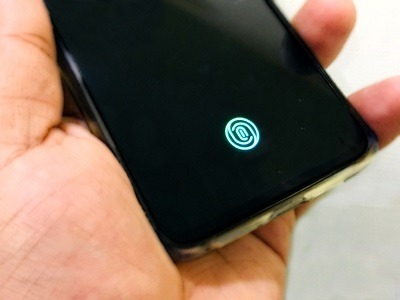
The latest market report published by Credence Research, Inc. "The market for in-display fingerprint sensors market to reached a value of US$ 672.7 million in 2018 and is expected to grow at a promising rate from 2019 to 2027".
Pioneering the realm of biometric technology, in-display fingerprint sensors have forged an indomitable niche in the consumer electronics sector, notably within smartphones, tablets, and smart devices. Exemplifying a confluence of security and user experience, these sensors underpin an industry perpetually in pursuit of innovation and enhancement. In light of this, the in-display fingerprint sensors market heralds a fascinating convergence of technology, design, and utility, reflecting contemporary shifts towards security, accessibility, and aesthetic appeal in electronic devices.
The inception of in-display fingerprint technology was a watershed moment in product design, enabling sleek, button-free interfaces, and bolstering device security simultaneously. Particularly, in smartphones, it enabled manufacturers to expand display sizes without compromising on security features, thereby adhering to the consumer's penchant for larger, unobstructed displays.
The market dynamics of in-display fingerprint sensors are moulded by a variety of factors, ranging from technological advancements to consumer preferences, and not to forget, the perpetual evolution of digital security threats. Advancements in sensor technology, such as the transition from optical sensors to ultrasonic variants, have enhanced the speed, accuracy, and reliability of in-display fingerprint recognition, creating a secure and seamless user experience.
Moreover, as we gallop into an era dominated by digital interactions, the imperative for secure, user-friendly authentication methods surges. The proliferation of online transactions, digital banking, and data-sensitive applications underscores the necessity of robust biometric security, fortifying the demand for in-display fingerprint sensors across various smart devices.
Browse the Full Report: https://www.credenceresearch.com/report/in-display-fingerprint-sensors-market
0 notes
Note
what do you like about cars?
I think you knew, upon asking this, that I could only ever have answered with either an ironic one-liner or a dozen-part novel. And unfortunately, this is already the second line, so novel it is. So then, without any further ado than the literal half year that’s gone by since this was asked, let's go.
1. Engineering matters
At the end of last year (aka when I started writing this, yikes) my dear old iPhone 6S moved on to a new home because it simply wasn't keeping up with me anymore. (And again, I was using an iPhone 6S in 2023. If I say a phone is too slow, it's too slow.) I had plenty of criteria for the replacement: a smallish screen not overboard on resolution, ideally a physical media control button and/or vibration toggle, repairability, a FUCKING AUX JACK... Something like the Sony Xperia 10, whose only real issue is marketing so trash you've only just now learned Sony never stopped making phones.
And yet...

This fancy wallpapers-sporting foldable is a Motorola RAZR 5G, a phone whose too-big screen already broke (though at the edge due to adhesive issues) and those who dared try warn repairing it will be as hard as phone repairs get. Why the fuck did I buy this? Well, because it has something more important than the aux jack, proper sizing, and good cameras: it made me go “That’s so cool!”, and when’s the last time a phone made you say that? It's the cusp of a new technology, and whether it becomes the future of phones, a future of phones, or just a weird footnote, it is an island of interesting in a sea of boring. And sadly, even this island is rapidly sinking. The drive for new form factors has already boiled down to the same two phones and their evolution is sinking into the usual millimetric proportion tweaking, camera rearranging, touchscreen expanding, case material switching, fingerprint sensor moving, and spec improvements not even manufacturers can come up with use cases for. I mean, seriously, how does the iPhone 15 differ from a software-updated iPhone X (which is apparently not pronounced "x", so I guess the iPhone Twitter)? Nothing is new. Nothing is tackled differently. The user experience does not differ. And why should it, when iPhone users will get a new one out of habit anyway and many are so tech illiterate moving a button could hospitalize them? Five generation newer and 150% faster are numbers you basically have to trust, because they don't make a difference that matters.
But in cars? 150% faster will matter alright. Even just looking at it. Cars are a visceral experience to even witness, let alone ride in or drive, and the frantic engineering pursuits for performance and overall capability actually have impactful real world implications beyond "some pockets will bulge 1mm less". And their engineering involves so many fields that there’s always a breakthrough going on somewhere - which leads to another reason their engineering is so interesting: there’s simply so much of it that anyone interested in engineering will find something for them, no matter their level or sector of expertise! Interested in mechanics? Well, obviously you’ll have a field day! Aerodynamics? Don't even get me started! Electronics? You're getting more goods by the year! It spread from engine management to safety assists to infotainment to ergonomic adjustments to even suspension and aerodynamics! Sound design? Even just working on the way engines sound is a profession of its own, let alone making these barrels of metal and glass propelling themselves at triple digit speeds through hundreds of explosions a second things you can comfortably have a conversation in - and that's not even mentioning horns and chimes! Hi-Fi? We’ve spent most of a century trying to get concert hall sound from a tiny tin can where everyone sits off-center and everything bumps and shakes around and you have maybe room for two components* a third the normal size and speakers can only be in a handful of places you wouldn’t want them which may well be the next room over**!
And this is just engineering.
*Like everything in the car world, there are exceptions to that
**For those unfamiliar, subwoofers, the speakers dedicated to, indeed, sub-bass, due to their frequent humongousness are often installed in the trunk.
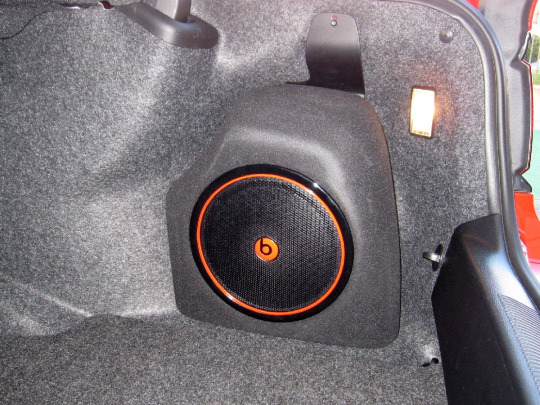
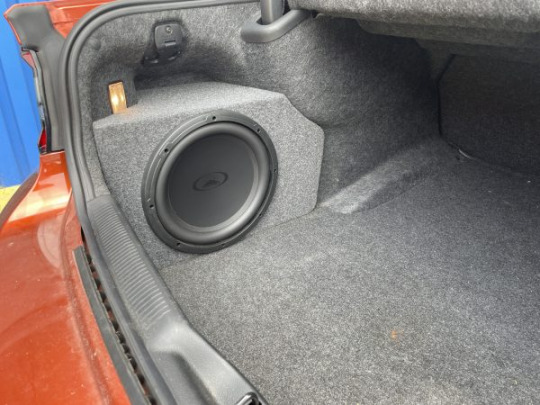
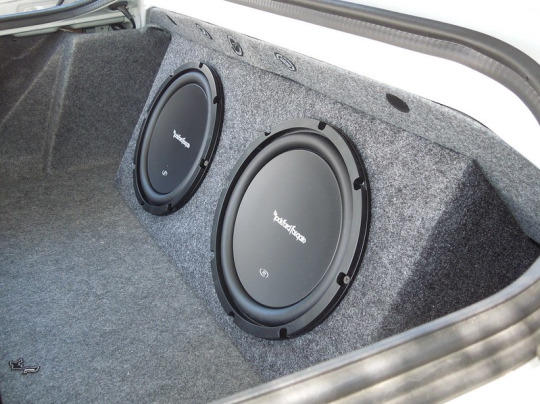
#stay tuned for part 2!#sony phones *are* great btw#they are sold in actual colors and they're full of cool features#their aux jack can double as a stereo input!!!
105 notes
·
View notes
Text
Business / Tech
Apple launches the iPhone 16e, a cheaper new version of the iPhone 16
By Lisa Eadicicco, CNN
4 minute read
Updated 11:55 AM EST, Wed February 19, 2025

People walk by an Apple store at the Westfield UTC shopping center on January 31, 2025 in San Diego, California.Kevin Carter/Getty Images North America/Getty Images CNN —
Apple on Wednesday announced a cheaper new version of the iPhone 16 called the iPhone 16e, signaling a renewed push into the budget smartphone market for the tech giant. It’s also the first iPhone with a cellular modem designed by Apple, and the cheapest iPhone Apple currently sells that supports Apple Intelligence.
The iPhone 16e costs $599 and launches on February 28.
Adding Apple Intelligence on a cheaper iPhone could be crucial for putting the company’s AI tools in the hands of more consumers. Apple has faced increased competition from Google and Samsung in recent years, both in the budget smartphone market and in the AI space. Google’s cheaper Pixel A-series of phones have been well received, for example, and both Google and Samsung have prioritized updating Android devices with new AI features over the last year.
The launch also marks a shift away from the iPhone SE, the budget iPhone line Apple debuted in 2016 and last updated in 2022. The iPhone SE made up only a sliver of Apple’s iPhone market share, according to research firm Consumer Intelligence Research Partners, which reports it accounted for just 5% of US iPhone sales as of December 2024.
The iPhone 16e, despite being more expensive than the SE, could be more appealing to those who want a device that feels more like Apple’s more recent phones. The iPhone SE was the last iPhone with a traditional home button and fingerprint sensor on the front, a longtime staple that Apple began shifting away from with the iPhone X in 2017.

Apple announced the iPhone 16e on February 19.Apple
What the iPhone 16e can do
Apple claims the new 5G modem in the iPhone 16e is the “most power-efficient modem ever on an iPhone.” The new modem is arriving more than five years after Apple acquired the majority of troubled chipmaker Intel’s smartphone modem business in 2019. Using its own modems makes Apple less reliant on partners and suppliers, giving it more control over product development and launch timing.
The iPhone 16e marks a long-awaited overhaul to Apple’s cheaper iPhone. The $429 iPhone SE, while less expensive, looked like the seven-year-old iPhone 8 and lacked features found on most new phones, such as face unlock and a nearly borderless screen. After Wednesday’s announcement, the iPhone SE is no longer available on Apple’s online store.
Unlike the iPhone SE, the iPhone 16e has a lot in common with the iPhone 16, bringing it up to speed with Apple’s current lineup. Both phones have a 6.1-inch screen, Face ID, a 48-megapixel camera and the Action button for programming shortcuts. However, the iPhone 16e is cheaper and it lacks a dedicated second camera for capturing wider shots and the Camera Control button for quickly accessing the camera.
It’s powered by the same processor as the rest of the iPhone 16 lineup, enabling it to run Apple Intelligence.
Apple Intelligence, which until now has only been available on the iPhone 16 family, 2023’s iPhone 15 Pro and Pro Max and certain iPads and Macs, is a blanket term that refers to a handful of AI-powered tools – such as the ability to generate emojis and images with a prompt, summarize notifications, and remove objects from photos as well as ChatGPT integration with Siri.
The popularity of ChatGPT following its late 2022 release sent a shockwave through the tech industry, prompting companies such as Microsoft, Google and Samsung to incorporate generative AI into their products.
But Apple was largely considered to be a latecomer to consumer-facing artificial intelligence. Like many tech companies, Apple has long used AI to power backend features, like camera modes, but didn’t begin rolling out Apple Intelligence until last fall. Apple Intelligence’s arrival on a cheaper device like the iPhone 16e signals the company sees AI as being a core part of its products moving forward.
Tech giants have positioned generative AI and chatbots as the next major evolution in how consumers use and interact with technology. Yet it’s unclear whether AI tools like Apple Intelligence will be compelling enough to drive smartphone upgrades, with Apple’s iPhone revenue falling short of Wall Street’s expectations in its fiscal first quarter of 2025.
4 notes
·
View notes
Text
fingerprint sensor market Size, Share, Trends, Opportunities and Industry Growth Analysis The rise in number of identity threats is one of the key factors leading to emergence of fingerprint technologies. Identity theft refers to the illegal acquisition of an individual's personal or financial details to perpetrate fraud, including unauthorized transactions. It occurs through various methods and inflicts harm on victims' credit, finances, and reputation.
1 note
·
View note
Text
Lenovo Idea Tab Pro
The Lenovo Idea Tab Pro, unveiled in March 2025, is a versatile 12.7-inch tablet designed to cater to both students and everyday users. It combines robust performance with user-friendly features, making it a compelling choice in the tablet market.
Design and Display
The Idea Tab Pro boasts a sleek and lightweight design, measuring 291.8 x 189.1 x 6.9 mm and weighing approximately 620 grams. Its 12.7-inch IPS LCD screen offers a resolution of 2944 x 1840 pixels, delivering crisp and vibrant visuals. The display supports a 144Hz refresh rate and HDR10, enhancing the viewing experience with smoother transitions and richer colors. An optional anti-reflection coating is available to reduce glare, improving usability in various lighting conditions.
Performance
At its core, the Idea Tab Pro is powered by the MediaTek Dimensity 8300 chipset, featuring an octa-core CPU configuration: one Cortex-A715 core at 3.35 GHz, three Cortex-A715 cores at 3.2 GHz, and four Cortex-A510 cores at 2.2 GHz. This setup ensures efficient multitasking and smooth performance across applications. The tablet comes equipped with 8GB of LPDDR5X RAM and offers storage options of 128GB (UFS 3.1) or 256GB (UFS 4.0), providing ample space for apps, media, and documents.
Camera Capabilities
For photography and video calls, the Idea Tab Pro features a 13 MP rear camera with autofocus and LED flash, capable of recording 1080p videos. The front-facing 8 MP camera is suitable for selfies and virtual meetings, also supporting 1080p video recording.
Audio and Multimedia
Audio quality is a highlight, with the tablet housing four JBL stereo speakers that support 24-bit/192kHz Hi-Res audio. This setup ensures an immersive sound experience, whether you're watching movies, listening to music, or participating in video conferences.
Battery Life and Charging
The device is equipped with a substantial 10,200 mAh Li-Po battery, supporting 45W wired charging. This large battery capacity ensures extended usage, making it reliable for all-day activities without frequent recharging.
Operating System and AI Features
Running on Android 14, the Idea Tab Pro integrates advanced AI capabilities through Google Gemini and features like Circle to Search with Google. These tools enhance user interaction, providing intuitive and efficient ways to access information and perform tasks.
Connectivity and Additional Features
Connectivity options include Wi-Fi 802.11 a/b/g/n/ac/6e, Bluetooth 5.3, and USB Type-C 3.2 with DisplayPort support. The tablet also features a side-mounted fingerprint sensor integrated into the power button for secure and convenient access. Stylus support is available, catering to users interested in drawing or note-taking.
Pricing and Availability
The Lenovo Idea Tab Pro is available in various configurations:
8GB RAM with 128GB storage, including a pen, priced at
8GB RAM with 256GB storage, including a pen, priced at
12GB RAM with 256GB storage, without accessories, priced at
Additional bundles with accessories like a folio case are available at varying price points. Prospective buyers should verify the included accessories with retailers to ensure clarity.
Conclusion
The Lenovo Idea Tab Pro stands out as a well-rounded tablet, offering a blend of performance, display quality, and user-centric features. Its integration of AI capabilities and support for accessories like a stylus and keyboard pack make it a versatile tool for both educational and everyday use.
#Lenovo Idea Tab Pro#Lenovo Idea Tab Pro price#Lenovo Idea Tab Pro price in bamgladesh#Lenovo Idea Tab Pro bangladesh
3 notes
·
View notes
Text
#Fingerprint Sensor Market#Fingerprint Sensor Market size#Fingerprint Sensor Market share#Fingerprint Sensor Market trends
0 notes
Text
Automotive Gesture Recognition Market Share, Size, Segmentation Analysis, Key segments and Forecast 2026
The global automotive gesture recognition market, valued at US$ 1.4 billion, is projected to grow significantly at a CAGR of 17.8% through 2026. By the end of 2026, the market is expected to reach US$ 2.7 billion in revenue.
Multimedia, infotainment, and navigation applications are anticipated to collectively represent over 60% of the global market share by 2026.
𝐃𝐨𝐰𝐧𝐥𝐨𝐚𝐝 𝐚 𝐒𝐚𝐦𝐩𝐥𝐞 𝐂𝐨𝐩𝐲 𝐨𝐟 𝐓𝐡𝐢𝐬 𝐑𝐞𝐩𝐨𝐫𝐭: https://www.factmr.com/connectus/sample?flag=S&rep_id=20
Key Players:
Cognitec Systems GmbH
Harman International Industries
Eyesight Technologies
Visteon Corp.
NXP Semiconductors
Synaptics Incorporated
Continental AG
Delphi Automotive PLC
Renesas
Gestigon GmbH
Melexis
Softkinetic
Neonode Inc.
Qualcomm Inc.
Navtek Solutions
Country-wise Insights
Germany is expected to be a pivotal market for automotive gesture recognition in Europe, driven by the presence of leading luxury car brands like BMW, Mercedes, and Audi. As customer preferences shift towards enhanced human-technology interaction, German automakers are increasingly incorporating advanced gesture recognition systems into luxury vehicles.
Rising investments in autonomous vehicle development within the country are anticipated to further boost demand for automotive gesture recognition technologies in the coming years. The adoption of advanced automotive technologies is likely to continue fueling the growth of the automotive gesture recognition market in Germany through 2026.
Category-wise Insights
The global automotive gesture recognition market is segmented into touch-based and touchless systems based on component type.
Touch-based systems require users to physically interact with a screen, which can divert a driver's attention from the road, potentially leading to accidents. To mitigate these risks, touchless systems are being increasingly adopted. These systems offer enhanced safety by minimizing the need for physical interaction, allowing drivers to operate functions through body movements and gestures.
Touchless systems utilize motion-sensing technology to detect specific gestures, providing a more intuitive and safer user experience. Due to these advantages, touchless systems are expected to dominate the market throughout the forecast period.
Competitive Landscape
Leading companies in the automotive gesture recognition market are enhancing their sales potential through the development of innovative products. To strengthen their global market presence, these providers are also pursuing strategic acquisitions and mergers.
In August 2022, Renesas Electronics Corporation, a prominent player in the semiconductor sector, announced its acquisition of Steradian Semiconductors Private Limited, a Bengaluru-based start-up specializing in radar technology. This acquisition is expected to enhance Renesas’s capabilities in human-machine interface (HMI) systems, including gesture recognition.
Additionally, in August 2022, STMicroelectronics, a major semiconductor manufacturer, introduced its new FlightSense Time-of-Flight (ToF) multi-zone sensors. These sensors use ToF technology to map and gather data without requiring a camera, making them suitable for applications such as gesture recognition, user detection, and intruder alert systems.
Automotive Gesture Recognition Industry Research Segments
By Component Type:
Touch-based Systems
Touchless Systems
By Authentication Type:
Hand
Fingerprint
Leg
Face
Vision
Iris
By Application:
Multimedia
Infotainment
Navigation
Lighting
Others
By Region:
North America
Latin America
Europe
APAC
MEA
𝐂𝐨𝐧𝐭𝐚𝐜𝐭:
US Sales Office 11140 Rockville Pike Suite 400 Rockville, MD 20852 United States Tel: +1 (628) 251-1583, +353-1-4434-232 Email: [email protected]
1 note
·
View note
Text
Fingerprint sensors are utilized in biometric fingerprint scanners and other fingerprint detecting systems. These gadgets have a fingerprint detection module built-in and are used for security and authenticity.
0 notes